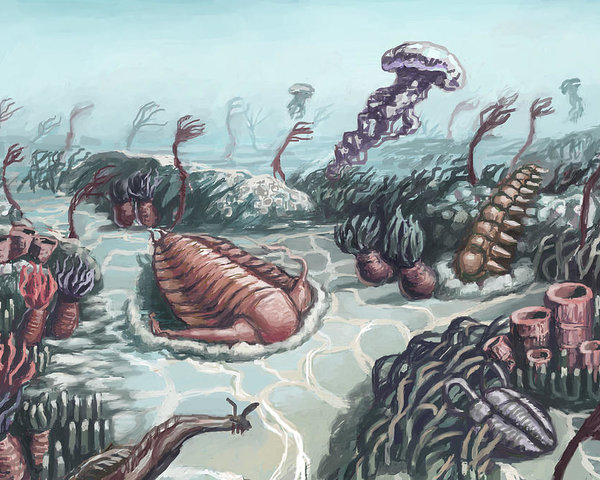Once again it was trilobites that provided the clue—in particular that seemingly mystifying appearance of different types of trilobite in widely scattered locations around the globe, all at more or less the same time.
又是三葉蟲提供了線索——尤其是,不同種類的三葉蟲似乎神秘地散布在全球的廣大地區,而且差不多在同一時期出現。
On the face of it, the sudden appearance of lots of fully formed but varied creatures would seem to enhance the miraculousness of the Cambrian outburst, but in fact it did the opposite. It is one thing to have one well-formed creature like a trilobite burst forth in isolation—that really is a wonder—but to have many of them, all distinct but clearly related, turning up simultaneously in the fossil record in places as far apart as China and New York clearly suggests that we are missing a big part of their history. There could be no stronger evidence that they simply had to have a forebear—some grandfather species that started the line in a much earlier past.
表面看來,大量完全成形而又多種多樣的動物的突然出現,似乎能增加寒武紀大爆發的奇妙程度,實際上恰恰相反。一種完全成形的動物,比如三葉蟲,突然孤立地出現是一回事——這確實是個奇跡,但許多動物在相隔萬里的中國和美國紐約的化石記錄中同時出現,顯然表明我們缺少它們的一大部分歷史。這是最強有力的證明,表明它們必定有個祖先——某個老祖宗物種,它在早得多的過去開創了那個家系。

And the reason we haven't found these earlier species, it is now thought, is that they were too tiny to be preserved. Says Fortey: "It isn't necessary to be big to be a perfectly functioning, complex organism. The sea swarms with tiny arthropods today that have left no fossil record." He cites the little copepod, which numbers in the trillions in modern seas and clusters in shoals large enough to turn vast areas of the ocean black, and yet our total knowledge of its ancestry is a single specimen found in the body of an ancient fossilized fish.
現在認為,我們之所以沒有發現那些早先的物種,是因為它們太小,無法保存下來。福泰說:“機能俱全的復雜動物不一定個兒很大。今天,海洋里充滿著微小的節肢動物,它們沒有留下化石記錄。”他以小小的橈足動物為例,在現代海洋里數以萬億計,群集在淺灘上,它們多得足以使大片海域變黑,而我們對其祖先的全部了解只有一個標本,那是在一條古老的變成了化石的魚肚子里找到的。
來源:可可英語 http://www.ccdyzl.cn/Article/201811/569875.shtml











